 2013 by Jeanne Williamson Published by Running Press, A Member of the Perseus Books Group All rights reserved under the Pan-American and International Copyright Conventions This book may not be reproduced in whole or in part, in any form or by any means, electronic or mechanical, including photocopying, recording, or by any information storage and retrieval system now known or hereafter invented, without written permission from the publisher. Books published by Running Press are available at special discounts for bulk purchases in the United States by corporations, institutions, and other organizations. For more information, please contact the Special Markets Department at the Perseus Books Group, 2300 Chestnut Street, Suite 200, Philadelphia, PA 19103, or call (800) 810-4145, ext. 5000, or e-mail . Library of Congress Control Number: 2012942464 E-book ISBN 978-0-7624-4927-9 9 8 7 6 5 4 3 2 1 Digit on the right indicates the number of this printing Cover and interior design by Kristina Almquist Design Illustrations by Kristina Almquist Edited by Kristen Green Wiewora Typography: Adobe Garamond, Trajan, and American Typewriter Running Press Book Publishers 2300 Chestnut Street Philadelphia, PA 19103-4371 Visit us on the web! www.runningpress.com
2013 by Jeanne Williamson Published by Running Press, A Member of the Perseus Books Group All rights reserved under the Pan-American and International Copyright Conventions This book may not be reproduced in whole or in part, in any form or by any means, electronic or mechanical, including photocopying, recording, or by any information storage and retrieval system now known or hereafter invented, without written permission from the publisher. Books published by Running Press are available at special discounts for bulk purchases in the United States by corporations, institutions, and other organizations. For more information, please contact the Special Markets Department at the Perseus Books Group, 2300 Chestnut Street, Suite 200, Philadelphia, PA 19103, or call (800) 810-4145, ext. 5000, or e-mail . Library of Congress Control Number: 2012942464 E-book ISBN 978-0-7624-4927-9 9 8 7 6 5 4 3 2 1 Digit on the right indicates the number of this printing Cover and interior design by Kristina Almquist Design Illustrations by Kristina Almquist Edited by Kristen Green Wiewora Typography: Adobe Garamond, Trajan, and American Typewriter Running Press Book Publishers 2300 Chestnut Street Philadelphia, PA 19103-4371 Visit us on the web! www.runningpress.com

A very special thank-you to my husband and best friend, Joshua Ostroff, for being supportive of me, and my art, for 30-plus years.
Contents
I am thankful to many professionals, family members, artists, and friends in my life for helping me to bring this book to you.
I am very grateful to everyone with whom I worked at Running Press for their help, expertise, and creativity in bringing this book to life, especially my editor Kristen Green Wiewora, project editor Annie Lenth, and designers Frances Soo Ping Chow, Bill Jones, and Ryan Hayes, and publisher Chris Navratil. Thanks to my agent Sorche Fairbank, who worked very hard in making this book a reality, as well as my previous book The Uncommon Quilter; to Kristina Almquist, who I have known since my very first day of art school way back when, for creating wonderful illustrations and for designing this book; and to Joel Haskell, for his portrait photography and patience. Many thanks go to my husband, Joshua Ostroff. This project would never have come to fruition without his love and support. I would also like to thank family members Jonah Ostroff, Rebecca Ferrell, and Elaine Ostroff for your love and support as well. Thank you to many artists, Linda Levin, Catherine Carter, Laraine Armenti, Leslie Rogalski, Michael Rogalski, Catherine Evans, Merill Comeau, Margot Stage, Martha Wakefield, Wendy Young, Jane McKinnon Johnstone, Brenda Cirioni, Adria Arch, Anne Krinsky, Kathleen Volp, Christiane Corcelle, Dianna Vosburg, and Carol Schweigert, for your professional support, friendship, and encouragement in the many years I have known you.
I would also like to thank Carol Hildebrand for sharing ideas and materials, and Nancy Poorvu, Gladys Cohen, and Kathleen Mahoney for your kindness and support. If I have neglected to add anyone who has helped me, I thank you, too, and apologize for not mentioning your name!  For as long as I can remember, I have been making my own cards, and the reasons vary. When my husband and I were planning our wedding many, many years ago, we wanted our invitations, RSVPs, and thank-you notes to have a theme that wouldnt have translated through what was then offered through a commercial printer. Instead, I created a line drawing of the design of our wedding chuppah, a canopy Jewish couples stand under during their wedding ceremony, which I appliqud with symbols of our wedding rings, a wineglass and napkin, hearts, and daisies, and had it printed on card stock. Then, my soon-to-be husband and I spent many hours hand coloring the cards with colored pencils. The end result was a unique set of cards that were made with love, and which cost very little.
For as long as I can remember, I have been making my own cards, and the reasons vary. When my husband and I were planning our wedding many, many years ago, we wanted our invitations, RSVPs, and thank-you notes to have a theme that wouldnt have translated through what was then offered through a commercial printer. Instead, I created a line drawing of the design of our wedding chuppah, a canopy Jewish couples stand under during their wedding ceremony, which I appliqud with symbols of our wedding rings, a wineglass and napkin, hearts, and daisies, and had it printed on card stock. Then, my soon-to-be husband and I spent many hours hand coloring the cards with colored pencils. The end result was a unique set of cards that were made with love, and which cost very little.
When our son was born a number of years later, we naturally did the same thing for his baby announcement and thank-you cards, as by then we were very experienced at card coloring. My husband designed the text on his mid-1980s work computer, which was very pixilated compared to computers now; I pasted it, with glue, to a black-and-white line drawing I made of confetti and balloons; and we had it printed. While our son was napping, and we should have been, too, we bonded as new parents by coloring the cards, once again with colored pencils. There have been other times when my husband and I have made cards together, but in recent years hes taken to making cards by drawing with markers on unusual sizes and shapes of scrap paper, and theres also the occasional computer-generated fake ransom note that kids love as birthday cards. I gradually transitioned to making one-of-a-kind paper cards on my own, using my sewing machine. I wanted to make cards that were unique, that had texture and were sewn, so I didnt have to be concerned about glue affecting the paper, or waiting for it to dry if I was in a rush when sending a card.
Sewing paper, instead of fabric, is not difficult, but it definitely has its pluses and minuses. One difference is that you cant pin pieces of the card elements to the card stock in advance: once you pin or sew a stitch, the hole is there forever. It does take a little planning to make a card, but the result is well worth it. The most positive part about making cards is that the recipients know it was made especially for them, with love. I hope youll enjoy it, too, and that this book will give you many ideas and a lot of inspiration. Jeanne Williamson This book is for the new or experienced sewer, for any type of creative artist who is looking to try something new, and for those who dont consider themselves artists but who like to play with materials.
When making greeting cards, its fun to experiment with new ideas, techniques, and materials. Thats why this book will show you how to make cards with unusual techniques, as well as uncommon or found materials. Inside this book youll find fifty-two projects divided into three categories: found objects, fabric and paper, and surface design. Each card project includes simple step-by-step instructions, which you can follow to produce the cards pictured in this book, but you can also use the projects as a jumping-off point for creating your own cards. The purpose of this book is not to make perfectly crafted cards. Instead, it was written to share the fun and creativity in card making, and to offer you an opportunity to try something new, as well as something that is not offered in other books about making cards.
There are no rules to follow when making your own cards. If you are an experienced sewer, you may choose to turn under the edges of your fabric when appliquing, or sew perfectly spaced stitches. However, when making a card, the length of your stitches is not important, as long as they are not so short that they rip through the paper. When working with pieces of fabric, you can leave the cut edges unfinished, and you may or may not want to use a simple zigzag stitch to keep the edges from fraying. There are also instructions in this book about how to construct an envelope for a fully handmade look, which is especially useful if the cards you make are unusual sizes. As when making your own cards, there can be a lot of flexibility and fun in making an envelope.
Next page

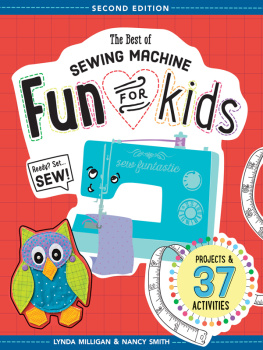
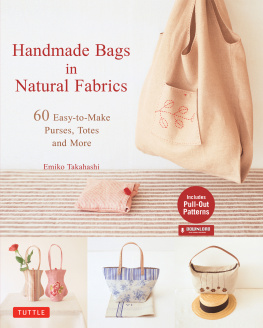
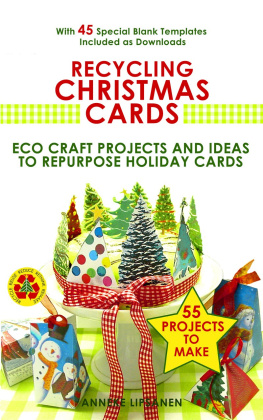
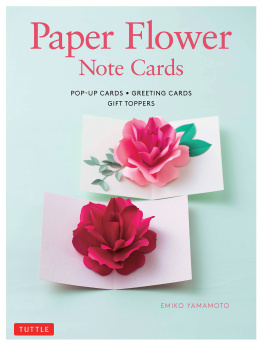

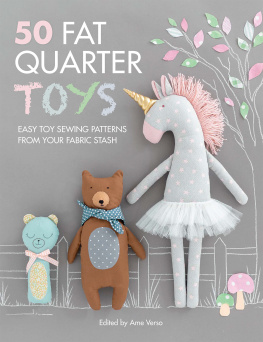
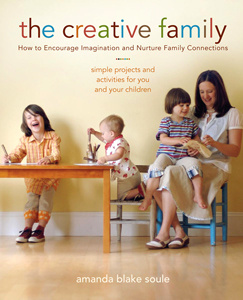
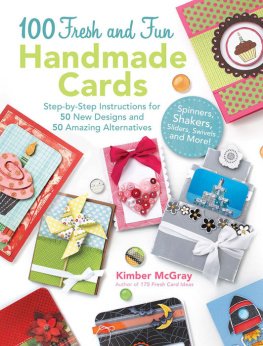
 2013 by Jeanne Williamson Published by Running Press, A Member of the Perseus Books Group All rights reserved under the Pan-American and International Copyright Conventions This book may not be reproduced in whole or in part, in any form or by any means, electronic or mechanical, including photocopying, recording, or by any information storage and retrieval system now known or hereafter invented, without written permission from the publisher. Books published by Running Press are available at special discounts for bulk purchases in the United States by corporations, institutions, and other organizations. For more information, please contact the Special Markets Department at the Perseus Books Group, 2300 Chestnut Street, Suite 200, Philadelphia, PA 19103, or call (800) 810-4145, ext. 5000, or e-mail . Library of Congress Control Number: 2012942464 E-book ISBN 978-0-7624-4927-9 9 8 7 6 5 4 3 2 1 Digit on the right indicates the number of this printing Cover and interior design by Kristina Almquist Design Illustrations by Kristina Almquist Edited by Kristen Green Wiewora Typography: Adobe Garamond, Trajan, and American Typewriter Running Press Book Publishers 2300 Chestnut Street Philadelphia, PA 19103-4371 Visit us on the web! www.runningpress.com
2013 by Jeanne Williamson Published by Running Press, A Member of the Perseus Books Group All rights reserved under the Pan-American and International Copyright Conventions This book may not be reproduced in whole or in part, in any form or by any means, electronic or mechanical, including photocopying, recording, or by any information storage and retrieval system now known or hereafter invented, without written permission from the publisher. Books published by Running Press are available at special discounts for bulk purchases in the United States by corporations, institutions, and other organizations. For more information, please contact the Special Markets Department at the Perseus Books Group, 2300 Chestnut Street, Suite 200, Philadelphia, PA 19103, or call (800) 810-4145, ext. 5000, or e-mail . Library of Congress Control Number: 2012942464 E-book ISBN 978-0-7624-4927-9 9 8 7 6 5 4 3 2 1 Digit on the right indicates the number of this printing Cover and interior design by Kristina Almquist Design Illustrations by Kristina Almquist Edited by Kristen Green Wiewora Typography: Adobe Garamond, Trajan, and American Typewriter Running Press Book Publishers 2300 Chestnut Street Philadelphia, PA 19103-4371 Visit us on the web! www.runningpress.com A very special thank-you to my husband and best friend, Joshua Ostroff, for being supportive of me, and my art, for 30-plus years.
A very special thank-you to my husband and best friend, Joshua Ostroff, for being supportive of me, and my art, for 30-plus years.  For as long as I can remember, I have been making my own cards, and the reasons vary. When my husband and I were planning our wedding many, many years ago, we wanted our invitations, RSVPs, and thank-you notes to have a theme that wouldnt have translated through what was then offered through a commercial printer. Instead, I created a line drawing of the design of our wedding chuppah, a canopy Jewish couples stand under during their wedding ceremony, which I appliqud with symbols of our wedding rings, a wineglass and napkin, hearts, and daisies, and had it printed on card stock. Then, my soon-to-be husband and I spent many hours hand coloring the cards with colored pencils. The end result was a unique set of cards that were made with love, and which cost very little.
For as long as I can remember, I have been making my own cards, and the reasons vary. When my husband and I were planning our wedding many, many years ago, we wanted our invitations, RSVPs, and thank-you notes to have a theme that wouldnt have translated through what was then offered through a commercial printer. Instead, I created a line drawing of the design of our wedding chuppah, a canopy Jewish couples stand under during their wedding ceremony, which I appliqud with symbols of our wedding rings, a wineglass and napkin, hearts, and daisies, and had it printed on card stock. Then, my soon-to-be husband and I spent many hours hand coloring the cards with colored pencils. The end result was a unique set of cards that were made with love, and which cost very little.